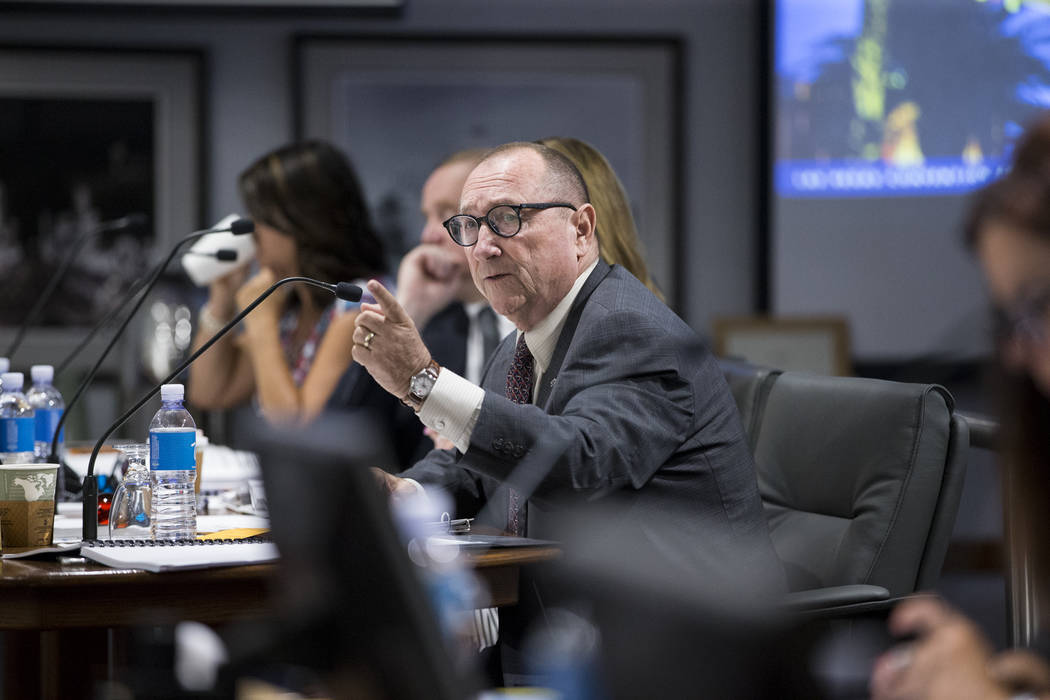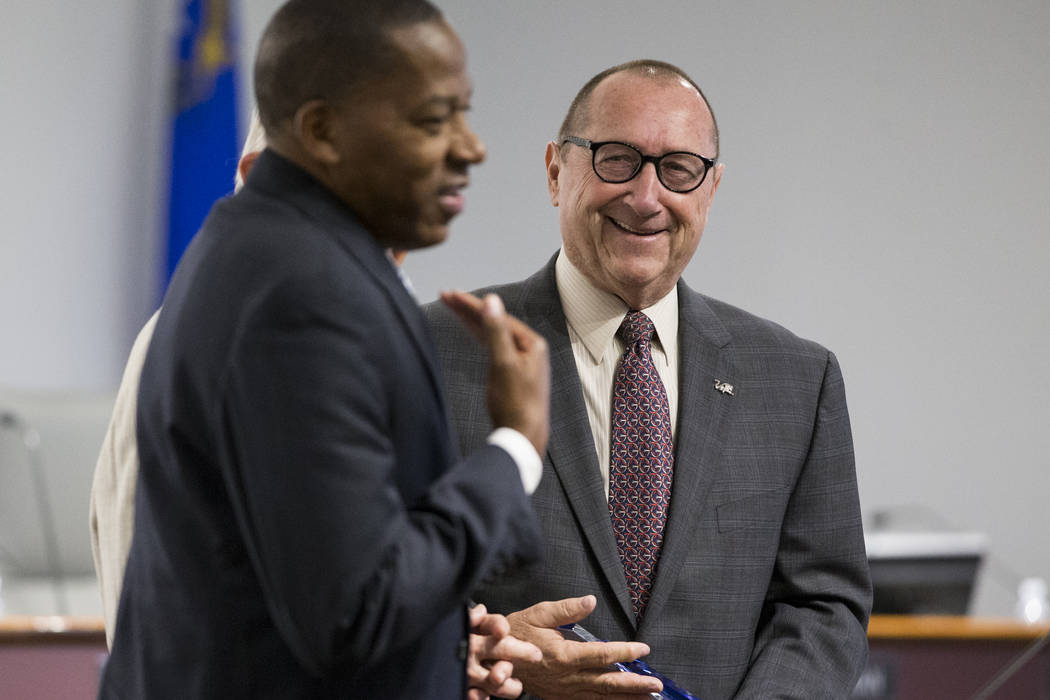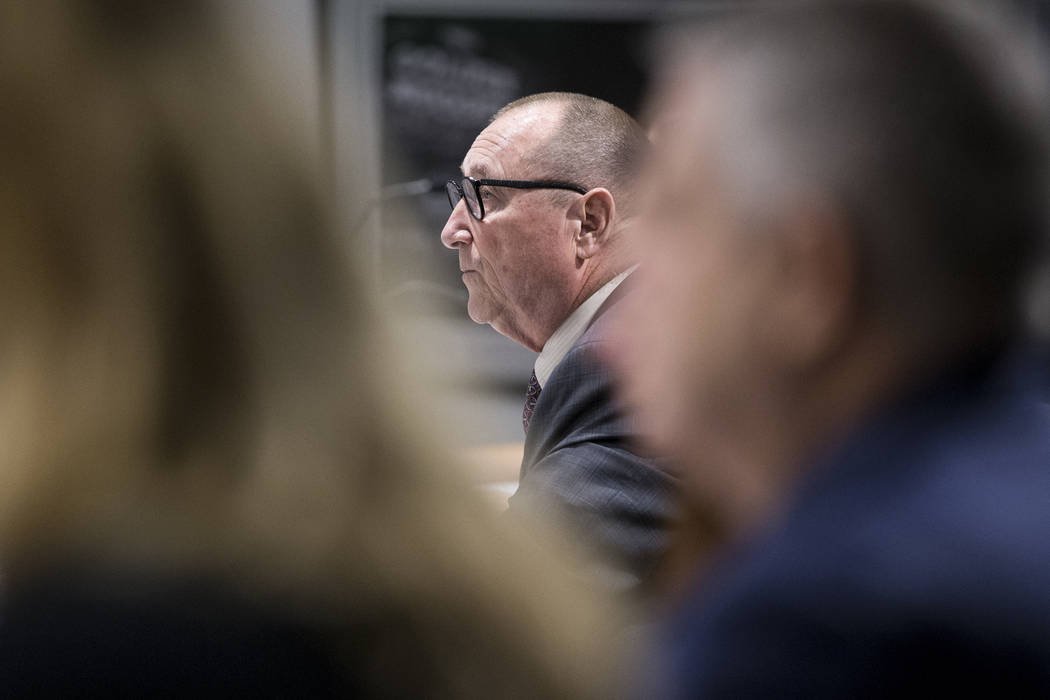LVCVA president and CEO gets 6 percent raise, 50 percent bonus




The Las Vegas Convention and Visitors Authority board of directors unanimously approved a 6 percent raise and a 50 percent bonus for its president and CEO, Rossi Ralenkotter, bumping his salary up to about $440,430 a year with a one-time bonus of about $208,000.
How the board arrived at approving that level of compensation wasn’t addressed in Tuesday’s meeting.
LVCVA compensation committee chairman Chuck Bowling, a Mandalay Bay executive, moved for the pay increase. There were no deliberations before the unanimous vote.
After the meeting, Bowling said he consulted with other members of the compensation committee, but it was unclear when and how that occurred.
Lack of discussion
An expert in Nevada press law said Tuesday that the lack of discussion about the compensation recommendation may have skirted the state’s open-meeting law.
Barry Smith, executive director of the Nevada Press Association, said it appears the public missed hearing the discussion about compensation, which “goes against the spirit of the law.”
“There’s no reason not to have that discussion in the open meeting,” Smith said. “That’s the whole purpose behind the statute.”
Late Tuesday, Bowling issued a statement but didn’t address the question of how the five other compensation committee members weighed in on it.
‘Exceptional performance’
“As chair of the compensation committee, I made a recommendation based on detailed analysis of the LVCVA’s exceptional performance year,” Bowling said in the emailed statement.
“Additionally, I elevated this presentation and discussion from committee to the full board level which, while not required, would be a more transparent process. I wanted every member of the board to see the full presentation of LVCVA performance and the overall justification on which I based my recommendation.
“The performance record speaks for itself. The board vote was unanimous and Rossi deserves every penny for his successful leadership of one of our community’s most important economic drivers.”
Asked whether he thought the recommendation violated the open-meeting law, LVCVA legal counsel Luke Puschnig said, “I have no knowledge of who (Bowling) talked to in regards to the situation.”
RJ investigation
Ralenkotter has been the subject of a Las Vegas Review-Journal investigation on LVCVA security officers being diverted from their jobs to take him to appointments despite his having a $9,000 car allowance. He also was given a $3,600 ring paid for with LVCVA funds when he completed 40 years with the organization.
The LVCVA also has been scrutinized for paying for lavish food and beverages while entertaining corporate clients.
The Review-Journal’s investigative stories were not discussed in the compensation review.
The increase in Ralenkotter’s compensation would move him up to the third-highest-paid public employee in the state behind two University of Nevada, Reno, surgery professors, according to the most recent database of public employee salaries maintained by Transparent Nevada.
But as Bowling pointed out in a 90-minute presentation prior to the vote, Ralenkotter makes average pay among CEOs of the nation’s top destination marketing organizations despite being tops in the industry.
The Las Vegas leadership position is different from most in that the LVCVA not only leads the marketing efforts of the destination but also oversees the Las Vegas Convention Center, the third-largest meetings facility in North America. In most locations, the marketing of a destination and convention center management are done by different people.
In past years, the compensation committee has met to deliberate on compensation in a meeting, then taken that recommendation to the full board. This year, Bowling opted to have the presentation in the board meeting.
The 14-member board, composed of casino executives and elected officials, voted after Ralenkotter gave an hourlong presentation of his accomplishments in the last fiscal year and his goals for next year.
‘We Did It’
A 30-page report titled “Fiscal Year 2017: We Did It. Together.” was distributed to the board, and a PowerPoint presentation outlined key growth statistics from the year as well as a list of 38 awards the LVCVA received in 2016.
Ralenkotter’s 10-point recap of last year included the LVCVA’s role in attracting a record 42.9 million visitors to Las Vegas in 2016. He also noted his and the agency’s role in the start of nonstop air service between Beijing and Las Vegas on Hainan Airlines in December and the establishment of a second NASCAR race at the Las Vegas Motor Speedway beginning next year.
His review also included the LVCVA’s role in co-hosting the final presidential debate with UNLV and the continuation of the agency’s successful “What Happens Here, Stays Here” advertising campaign. He also listed leading the successful campaign to win funding from the Nevada Legislature for a $1.4 billion convention center expansion and renovation that is underway.
Ralenkotter said that next year he will continue to move the convention project forward, take an advocacy role in national travel and tourism initiatives and work to attract 43.2 million visitors to the city in 2017. At the end of June, visitor volume was slightly behind last year’s record pace but ahead in convention attendance, occupancy rates and average daily room rate.
Contact Richard N. Velotta at rvelotta@reviewjournal.com or 702-477-3893. Follow @RickVelotta on Twitter.
By the numbers
Compensation has varied based on the CEO’s performance. Last year, Ralenkotter received the second of two $50,000 annual pay increases, which amounted to about a 7.3 percent raise. He also received a 40 percent bonus — 40 percent of his current annual pay rate — or $166,200. In 2014, he received a $50,000 raise, about an 8 percent increase plus a 50 percent bonus.
The 50 percent bonus this year represented the highest bonus by dollar amount ever paid by the board. Twice before, in 2013 and 2014, Ralenkotter received a 50 percent bonus.
But in years immediately after the Great Recession, the board voted no pay increase for Ralenkotter. Because Ralenkotter fell below the average compensation level of other CEOs nationwide, a push was made to get him to above the national average after the recession ended.












